If you love sushi, you may have noticed small fish eggs in different colors that decorate your sushi rolls and add a pop of flavor or an ingredient listed as “masago.” Those tiny fish eggs are called masago, and they are very healthy and flavorful.
But do you know what is masago in sushi? From your favorite sushi restaurant to a tray of California rolls from your supermarket, masago sushi is a widely used ingredient and is very popular.
These tiny fish eggs are often used as a replacement for more expensive fish roe like tobiko, but they are also prized on their own for their unique characteristics.
Read more to find out about this special ingredient. It is affordable, fun, delicious, and packs a lot of nutrients in a teeny, tiny package!
You can easily find masago in Japanese grocery stores and supermarkets, and hopefully, this article will inspire you to pick some up to try at home for a sushi night you won’t forget!
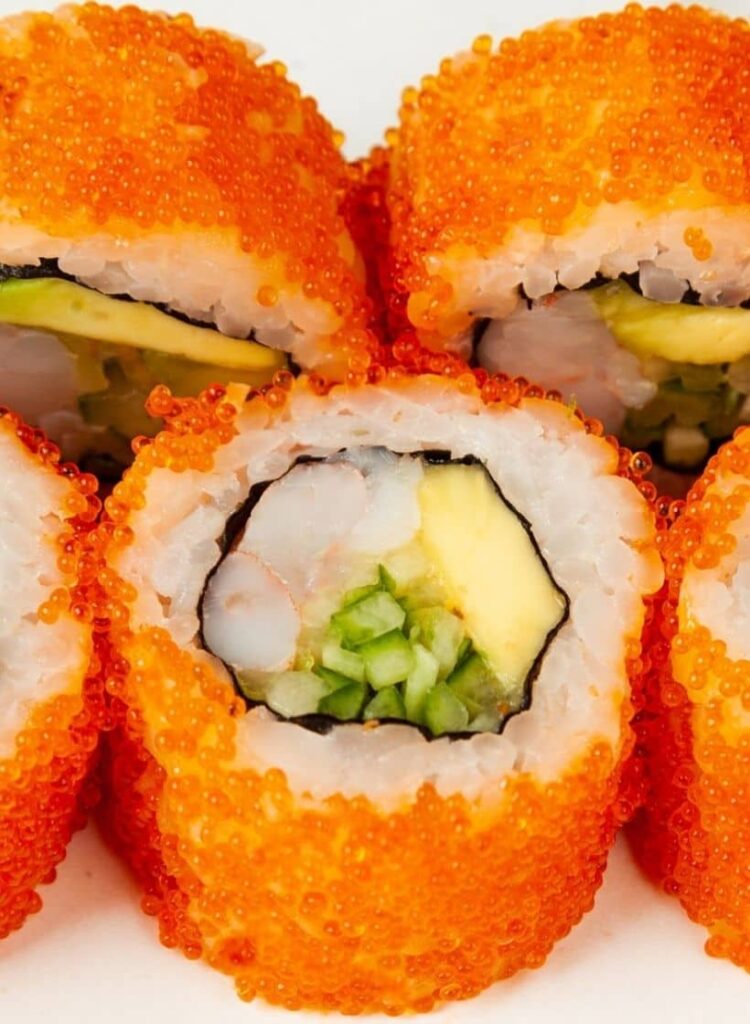
What Is Masago?
Masago is a type of fish egg or fish roe. Masago is a very popular ingredient throughout Asia, particularly in Japanese cuisine. These eggs are very small and used as a sushi topping.
Fish roe is ripened eggs harvested from many different types of fish. Masago is harvested from capelin, a small fish found in the Arctic, North Pacific, and North Atlantic oceans.
These tiny fish are part of the smelt family, and while they are edible on their own, their small bones make eating them whole rather difficult. Therefore, these fish are used to make fish oil, fishmeal, and masago.
Fish roe can be harvested from female fish when they start spawning eggs, typically around the age of 2-4 years old.
Masago Vs. Tobiko
Both Masago and Tobiko are common fish roe that is used in sushi. While masago is capelin roe, tobiko is from the roe of flying fish.
Masago is smaller and naturally has a dull, yellow color but is often dyed. Tobiko is larger, has a natural bright red color, and has more flavor.
Masago is typically much less expensive than tobiko, and so it makes a popular substitute for the flying fish roe.
Tobiko is naturally bright red, but it can be dyed red, green, or black. Masago is dull yellow naturally and is very often dyed to be bright red or orange.
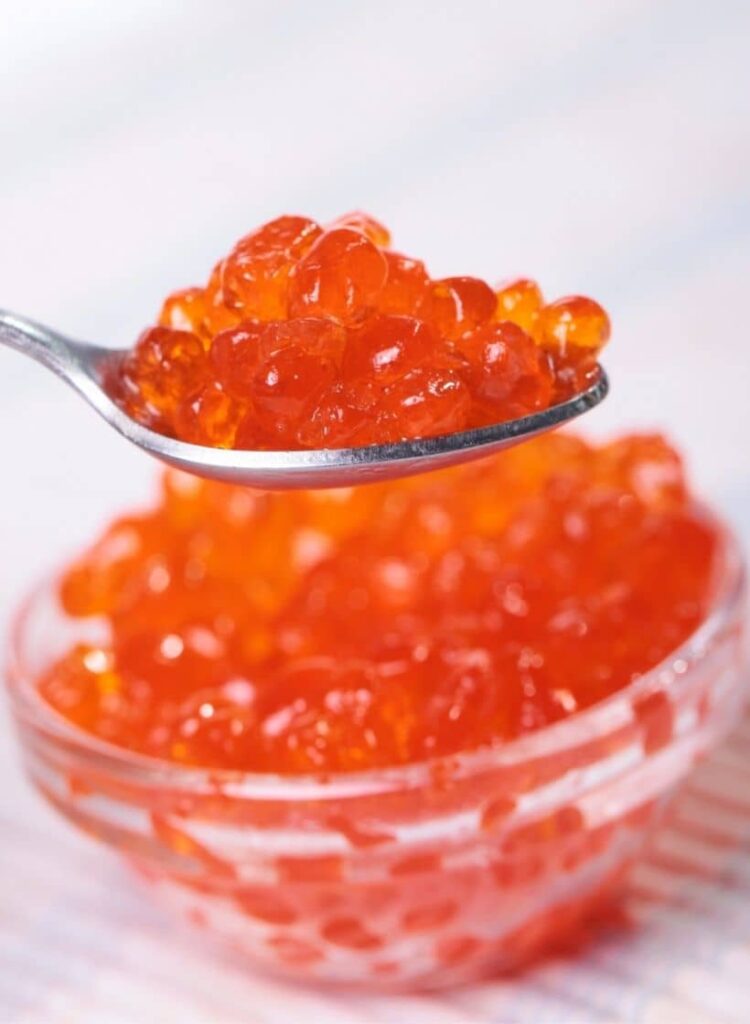
What Does Masago Taste Like?
Masago tastes a lot like tobiko, which is to say that it is a little salty and tastes like the ocean.
Some describe a mild taste with slightly sweet and citrus-like undertones. It has a crunchy texture and often provides a tiny pop when chewed.
However, the popping texture is not as pronounced as it is with bigger fish roe due to its small size.
Masago goes well with steamed rice and vegetables and is often mixed with wasabi, ginger, and squid ink.
Is Masago Safe to Eat?
Yes, masago is edible and is safe to eat. However, if you are allergic to fish or shellfish, you may want to avoid these fish eggs. It is also high in sodium, so if you are salt-sensitive or watching your sodium content, you may want to limit this food in your diet.
Additionally, fish roe contains vitellogenin, a particular egg yolk protein. If you are allergic to eggs, you may want to avoid all fish roe.
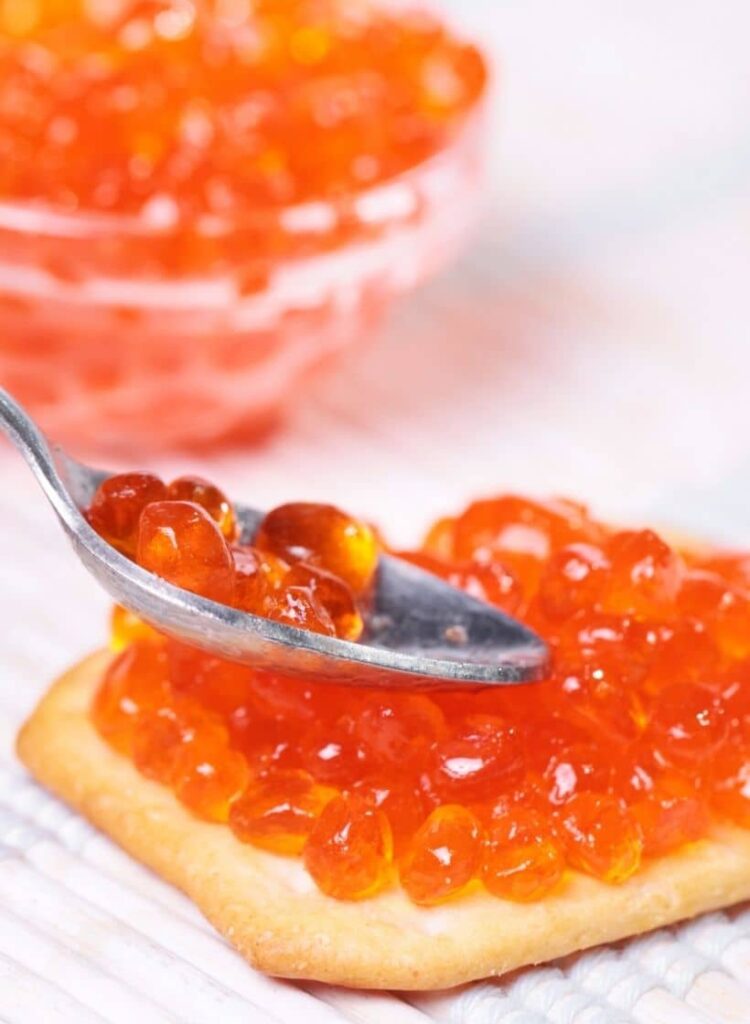
The Best Ways to Use Masago:
There are several ways to use masago, as it can be very versatile, especially with Japanese cuisine.
Sushi Topping: This is a very popular way to use masago. Most of the time, you will see masago on sushi. Inside Out rolls can be rolled and pressed into masago to give a light coating before slicing. Additionally, sushi rolls can have masago spooned on a roll like a California roll.
Cream Sauce: A popular way to eat masago in Japan is to create a light cream sauce with masago mixed in and then toss with spaghetti noodles.
Filling Sushi: Instead of topping your sushi roll with the fish roe, some people will add it as a filling and roll it up into the sushi.
Decoration: Masago has a very vibrant color and can decorate certain sushi rolls or noodle dishes.
Nutrition And Health Benefits
Masago is very nutritious. One tablespoon (15 grams) of Masago has only 40 calories and contains healthy Omega 3 fatty acids, as well as the following:
- Calories: 40.3
- Fat: 2.9 grams
- Carbohydrates: 0.6 grams
- Protein: 3.9 grams
- Vitamin B12: 3.2 micrograms
- Sodium: 240 milligrams
- Magnesium: 48 milligrams
- Riboflavin: 0.1 milligrams
- Pantothenic Acid: 0.6 milligrams
- Phosphorus: 57 milligrams
- Iron: 1.9 milligrams
- Selenium: 10.5 micrograms
Low in calories but high in nutrients:
Masago is low in calories but has many nutrients like omega 3 fatty acids, vitamin B12, vitamin D, selenium, calcium, and magnesium.
The healthy fats found in masago are good for the cardiovascular system, hormones, and immune system. It is also low in mercury content.
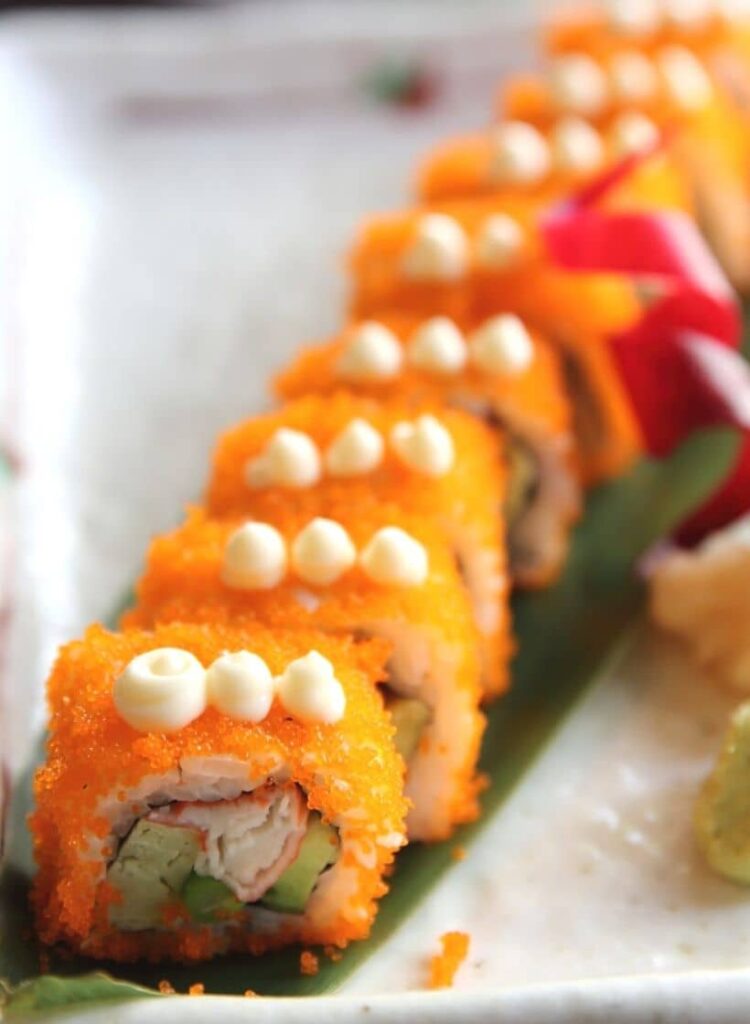
How To Make Sushi with A Masago Topping
- Make an inside-out roll with the rice on the outside rather than seaweed, similar to a California Roll.
- Spread the masago onto a plate and roll the long sushi roll in masago before slicing.
- Alternatively, you can spoon a little masago on top of each roll piece after slicing.
How To Store Masago?
Masago does well when frozen and can last in the freezer for about 6 months. Once it is thawed, it can be refrigerated but should be consumed within 4-5 days.
How to add it to your diet?
This unique ingredient can be easy to add to your diet. Some popular and simple ways to include masago in your diet include:
- Use as a sushi roll ingredient or topping.
- Use as a topping for sushi or poke bowl.
- Add mayonnaise, soy sauce, or wasabi to create a masago sauce to dip dumplings or drizzle over salad greens.
- Add masago to cream sauces and serve with noodles or pasta.
If you love sushi, you may have noticed small fish eggs in different colours that decorate your sushi rolls and add a pop of flavor or an ingredient listed as “masago.”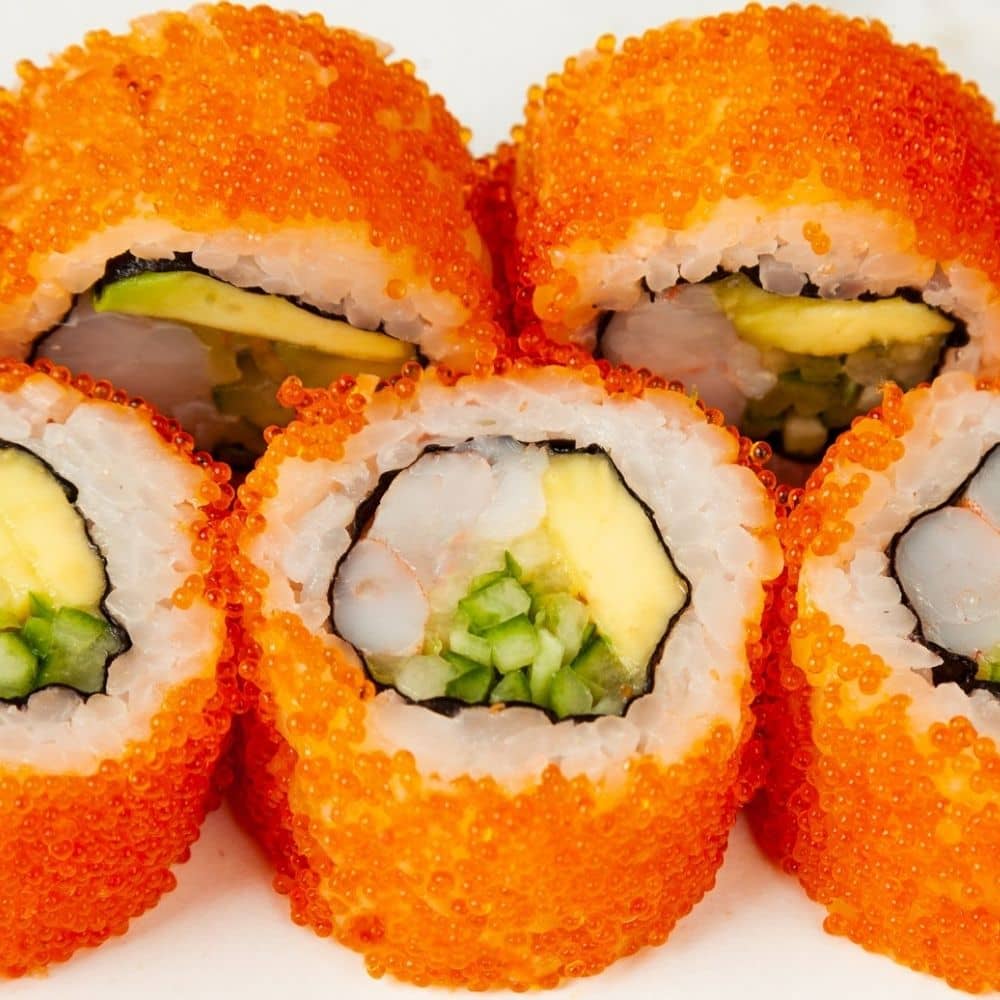
What Is Masago In Sushi? What Does It Taste Like?
Ingredients
For Sushi Rice
For Masago Sushi
Instructions
rice vinegar, sugar, and salt. The rice should still be slightly warm when you mix this in.
from sticking to your hands too much.





